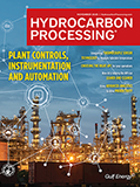Research: Developing an energy-saving, carbon-capturing method for making ethylene glycol
The chemical production industry is looking for reductions in numerous areas. One is cost, another is the energy required to produce chemicals. Perhaps most importantly, the industry is seeking ways to decarbonize, minimizing its environmental impact through reducing the output of carbon dioxide.
New research from the lab of Professor Ted Sargent (Northwestern's McCormick School of Engineering) could be a step toward achieving that goal.
The team developed a system that produces ethylene glycol — best known as antifreeze but also a key building block for the polymers industry — with high selectivity, generating minimal waste and using less energy. At a time when electricity demand is surging due to the rapid growth of AI-driven data centers, the approach could help conserve power. The same system also captures carbon dioxide for potential use or long-term storage.
“With this system, electrochemical chemical upgrading can be coupled with carbon capture in a single electrochemical system, tackling the carbon dioxide emission issue while generating chemicals,” first author Rong Xia said.
“The work advances both the goal of reducing waste in the making of chemicals and the goal of making manufacturing more efficient,” Sargent said. “The latter is a key priority in nations that wish to increase their manufacturing sectors.”
The team reported its findings in the paper “Electrosynthesis of ethylene glycol from ethylene coupled with CO2 capture," published Aug. 18 in the journal Nature Catalysis. Sargent is the Lynn Hopton Davis and Greg Davis Professor of Chemistry, professor of electrical and computer engineering at Northwestern Engineering, and director of the Paula M. Trienens Institute for Sustainability and Energy. Xia, a former postdoctoral fellow in Sargent’s lab, was the paper’s first author. Ke Xie, a research associate professor, leads the team’s research efforts in carbon transformations.
Traditional electrochemical carbon capture often faces challenges such as low current densities (processing small amounts of carbon dioxide at a time) and high cell voltages (high energy consumption). In this study, researchers developed a new method that uses a special membrane with a pH difference on each side to improve carbon capture during the production of ethylene glycol. The system works at power and efficiency levels expected to rival the best current carbon capture technologies, while also making ethylene glycol, which is produced globally at a scale of about 30 million metric tons each year.
This innovation sequesters 0.6 tons of carbon dioxide per ton of ethylene glycol produced, lowering the total energy consumption to 10 gigajoules of energy per ton, compared to 22.6 gigajoules per ton of ethylene glycol from existing methods. By using electricity and capturing carbon dioxide, the new process greatly reduces the climate impact of making ethylene glycol. It’s estimated to release only 0.13 tons of carbon dioxide for every ton produced — far below the current global average of 1.2 tons.
“Rong’s innovations have gone from an early project to developing an entirely new thrust in our research group, one focused on decarbonizing chemical transformations,” Xie said. “We are working with a number of industry partners, and seeking to add more, to find increasingly energy-efficient and materials-efficient ways to manufacture chemicals and materials.”






Comments